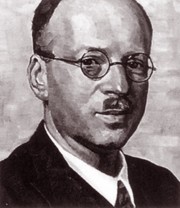
“[…] for his outstanding synthetic work and research in the field of sex hormones and polyterpene […]. This work is of paramount importance in many areas of human life and earned Professor Ruzicka the highest respect of the scientific community.”
Mit seinen Arbeiten zu den Polyterpenen stiess R. die bis dahin herrschende Lehrmeinung um, wonach Kohlenstoffringe mit mehr als acht Ringen nicht existenzfähig seien (Baeyersche Spannungstheorie): Er konnte zeigen, dass sich vielgliedrige Kohlenstoffringe in ihrer Beständigkeit wie offenkettige Polymethylenverbindungen verhalten. R. griff dabei zur Methode der Dehydrierung der Polyterpene zu aromatischen Kohlenwasserstoffen, deren Struktur entweder bekannt oder relativ leicht zu klären war. Indem R. arbeitshypothetisch die bereits früher isolierten menschlichen Sexualhormone als biologische Abbauprodukte des Cholesterins auffasste, gelang ihm die Synthese von Androsteron und Testosteron. Die Entdeckungen R.s fanden in der Riechstoffindustrie (Parfums), in der Medizin und in der pharmazeutischen Industrie Anwendung.

